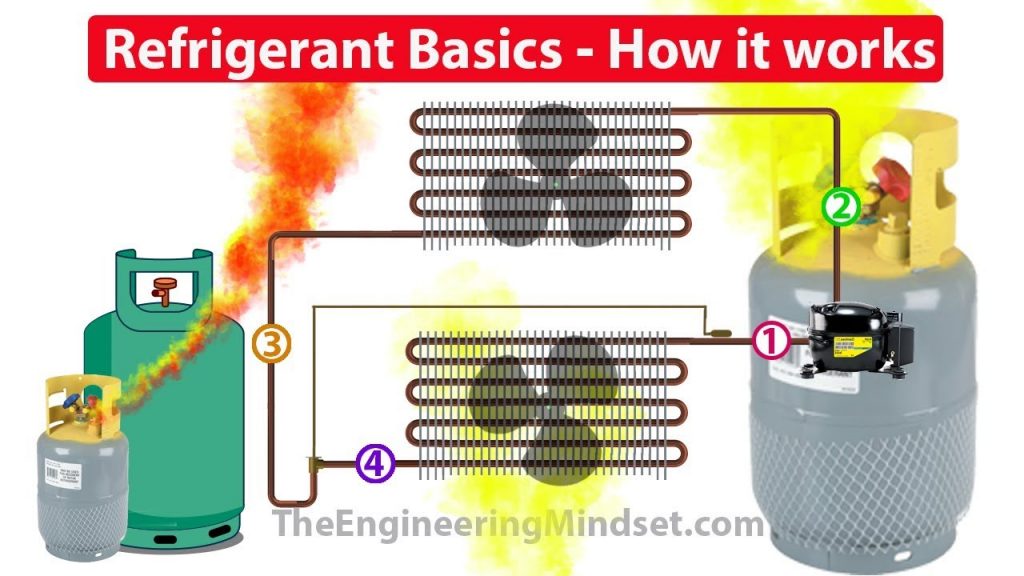4. Select AC Refrigerants

Refrigerants used in most air-conditioning systems manufactured until recently can be very damaging to the Earth’s ozone layer. Equipment that contains and operates using these refrigerants is being phased out internationally.
When buying a new air conditioning system, be sure to buy a current product that utilizes refrigerants that do less damage to the environment.
How do refrigerants pass from AC equipment to the atmosphere? All refrigerant gasses are contained in an air conditioner’s sealed system. The problem is that an aging sealed system may develop leaks and allow the refrigerant to escape. The release of these gasses also occurs during servicing.
AC Refrigerants Being Phased Out
In 1987, an international agreement began a worldwide phase-out of ozone-depleting CFCs (chlorofluorocarbons), eventually stopping the production of AC equipment that uses them in 1996.
These were replaced by hydrochlorofluorocarbons (HCFCs). R-22 (also known as HCFC-22 or, more commonly “Freon”) has been the favored refrigerant for residential air-conditioning and heat pump systems. This is less damaging to the Earth’s ozone layer, but still is an ozone-destroying greenhouse gas and, during its manufacture, produces HFC-23, which contributes significantly to global warming.
This is a problem, so the manufacture and import of R-22 AC equipment was phased out by the EPA in 2010 under the Clean Air Act. The manufacturer of the refrigerant R-22 was reduced by 75%, will be further reduced by 90% in 2015, and was scheduled to be stopped by 2020. As a result, R-22 is becoming increasingly expensive.
